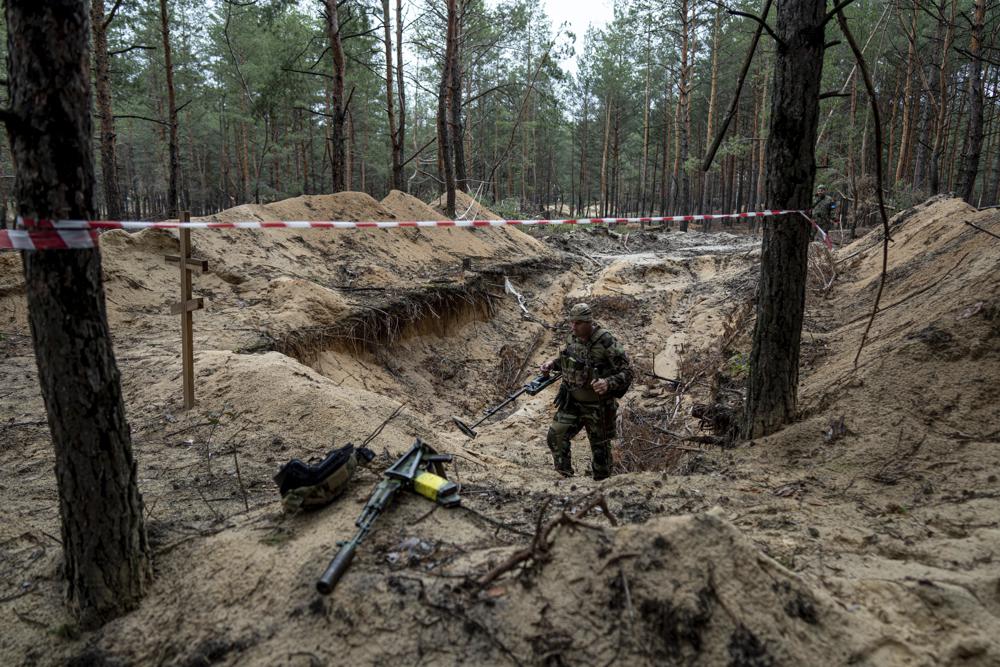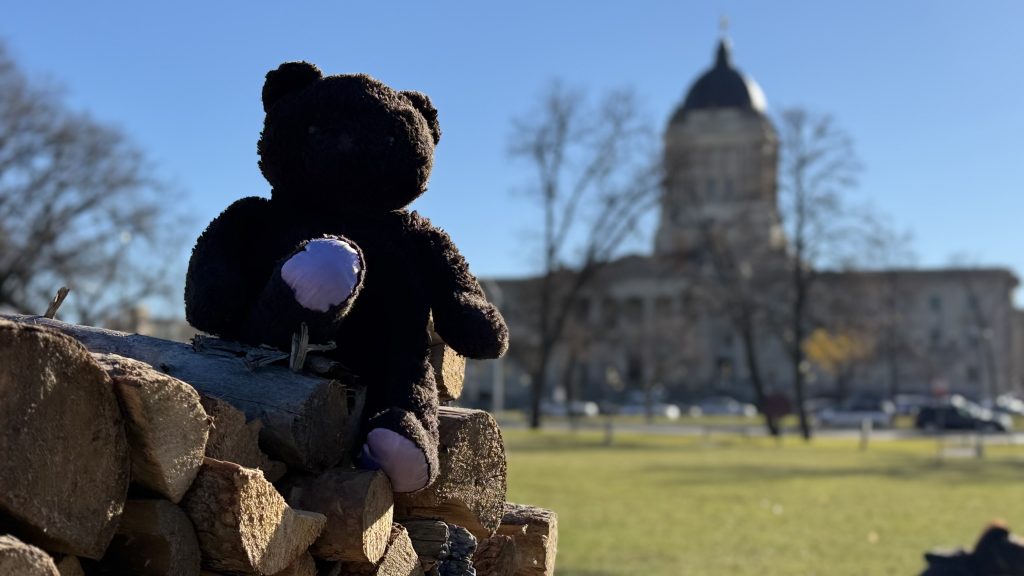Zelenskyy: Mass grave found near recaptured city of Izium

Posted September 15, 2022 7:06 pm.
Ukrainian authorities found a mass burial site near a recaptured northeastern city previously occupied by Russian forces, President Volodymyr Zelenskyy said Thursday night.
“A mass grave of people was found in Izium in the Kharkiv region. The necessary procedures have already begun there. More information – clear, verifiable information – should be available tomorrow,” Zelenskyy said in his nightly televised address.
Associated Press journalists saw the site in a forest outside Izium on Thursday. Amid the trees were hundreds of graves with simple wooden crosses, most of them marked only with numbers. A larger grave bore a marker saying it contained the bodies of 17 Ukrainian soldiers.
Ukrainian investigators were already at work examining the site with metal detectors for any hidden explosives.
Oleg Kotenko, an official with the Ukrainian ministry tasked with reintegrating occupied territories, said videos that Russian soldiers posted on social media indicated there were likely more than 17 bodies in the mass grave.
“We haven’t counted them yet, but I think there are more than 25 or even 30,” he said.
Izium resident Sergei Gorodko said that among the hundreds buried in individual graves were dozens of adults and children killed in a Russian airstrike on an apartment building. He said he pulled some of them out of the rubble “with my own hands.”
In his address to the nation, Zelenskyy invoked the names of other Ukrainian cities where authorities said retreating Russian troops left behind mass civilian graves and evidence of possible war crimes.
“ Bucha, Mariupol, now, unfortunately, Izium. ? Russia leaves death everywhere. And it must be held accountable for it. The world must bring Russia to real responsibility for this war,” he said.
Sergei Bolvinov, a senior investigator for Ukrainian police in the eastern Kharkiv region, told British TV broadcaster Sky News that a pit contained more than 440 bodies was discovered near Izium after Kyiv’s forces swept in. He described the grave as “one of the largest burial sites in any one liberated city.”

Oleg Kotenko, the Commissioner for Issues of Missing Persons under Special Circumstances uses his smartphone to film the grave a Ukrainian soldier in the recently retaken area of Izium, Ukraine, Thursday, Sept. 15, 2022 who had been killed by Russian forces near the beginning of the war. A mass grave of Ukrainian soldiers and unknown buried civilians was found in the forest of recently recaptured city of Izium. (AP Photo/Evgeniy Maloletka)
“We know that some (of the people buried in the pit) were shot, some died from artillery fire, from so called mine-explosion traumas. Some died from airstrikes. Also, we have information that a lot of bodies have not been identified yet” Bolvinov said.
Russia’s forces left Izium and other parts of the Kharkiv region last week amid a stunning Ukrainian counteroffensive. On Wednesday, Zelenskyy made a rare trip outside Ukraine’s capital to watch the raising of the national flag at Izium’s city hall.
Ukraine’s deputy interior minister, Yevhen Enin, said Thursday night that other evidence found after Kyiv’s sweeping advance into the Kharkiv region included multiple “torture chambers” where both Ukrainian citizens and foreigners were detained “in completely inhuman conditions.”
“We have already come across the exhumation of individual bodies, not only with traces of a violent death, but also of torture – cut off ears, etc. This is just the beginning,” Enin said in an interview with Ukraine’s Radio NV.
He claimed that among those held at one of the sites were students from an unspecified Asian country who were captured at a Russian checkpoint as they tried to leave for Ukrainian-controlled territory.
Enin did not specify where the students were held, although he named the small cities of Balakliya and Volchansk as two locations where the alleged torture chambers were found. His account could not be immediately verified independently.
“All these traces of war crimes are now carefully documented by us. And we know from the experience of Bucha that the worst crimes can only be exposed over time,” Enin said, in a reference to a Kyiv suburb where the bodies of hundreds of civilians were discovered following the Russian army’s withdrawal from the area in March.
Earlier Thursday, Zelenskyy said that during the five months the Russians occupied the region, they “only destroyed, only deprived, only took away. They left behind devastated villages; in some of them there is not a single undamaged house. The occupiers turned schools into garbage dumps, and churches – shattered, literally turned into toilets.”








